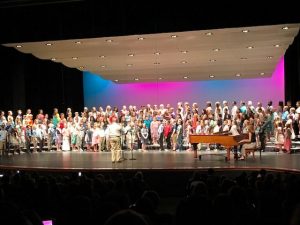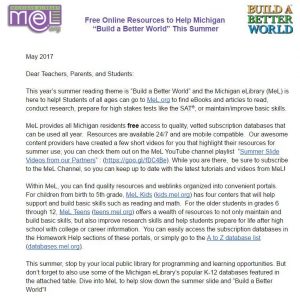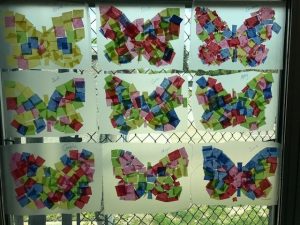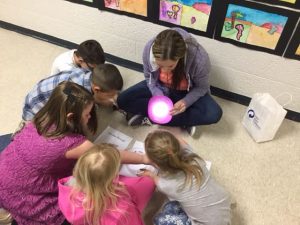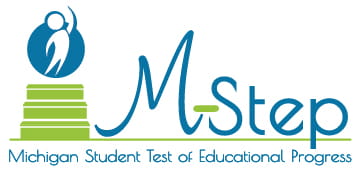Arno Awesomeness!!
Coming soon to Arno…
May 22
Parent Strategic Plan times 10:30 and 6:00
Admin Strategic Plan 1:00
5th Grade Maturation program begin
504 LB 8:00
May 23
504 NR 11:15
Kinder DRA Day
May 24
Schoolwide Title meeting all day
SIP Meeting 3:45
May 25
3rd Grade DRA Day
Principal”s meeting 9:00
May 26
2nd Grade DRA Day
M-STEP Window Closes!!!
CONGRATULATIONS
Congratulations to Colleen and Erin for being recognized at Monday’s Board Meeting for their hard work in organizing many guest readers at all three elementary schools during March is Reading Month! Many of our classes enjoyed a guest reader from the AP community and we appreciate the efforts of Colleen and Erin to invite and coordinate the readers!


Schoolwide Title I Update
The Chair team recently met all day with district to wrap the main SIP and any loose ends. At this point, we are just about complete with the PD plan portion and that will complete the entire process! Next Wednesday, we will reconvene to review the entire plan and diagnostic, then meet and present to Mike Darga in the p.m. If everything is done, we will then submit the entire package to the state for final approval and our letter to confirm our move to schoolwide. It has been a tremendous process, but one that I feel was worth the work to make our school an even better place. Thanks to all of our team members that have attended the entire years worth of meetings; Todd, Beth, Jeanine, Megan, Cathy, and Sara.
Please give your important feedback…
Assessment Surveys for Spring 2017 Administrations
The Michigan Department of Education would like to say THANK YOU for your part in a very successful assessment administration this spring. We ask that you take a moment to provide your feedback in our administration surveys. Your feedback remains an important tool for the future planning and development of quality assessments and testing practices for educators and the kids of Michigan. We have made significant changes overall based on much of the feedback from last year. The surveys have been categorized by your role in the testing process and require about 10 to 15 minutes to complete.
Based on your role, please complete the surveys mentioned below by selecting the link and proceeding with the survey or you can access the link on each assessment’s web page under What’s New: M-STEP Administration Survey for coordinators and assessment administrators – located on the M-STEP web page (www.michigan.gov/mstep)
From the PTA
Happy Friday!
Just a quick reminder from the PTA that our Stevie B’s Fundraiser is next Tuesday, May 23rd from 11 am- 9 pm. Teachers EAT FREE and the class with the highest amount of participants gets a FREE PIZZA PARTY! Just let the cashier know when you order you’re from Arno and what teacher you have. If you have more than one child at Arno, you may split the number of people in your party. So, if you have a family of 5 and 2 students that attend Arno, you can give 2 credits to one and 3 credits to another or divide it up as you please. They also have a small arcade there and token purchases also account for credits as well!
Have Fun! Eat some delicious pizza and earn a free pizza party while raising funds for our kids at Arno!
Have a Great Weekend!
Summer Reading Ideas…
2017SummerResourcesLettertoTeachersandParents-1nuyphm
The following links are full of information about increasing text complexity in the classroom and include text sets and resources to help teachers navigate text complexity in the classroom. http://www.ccsso.org/ http://www.ccsso.org/ |
Science live in First Grade…
SAFETY TOWN
Who: Kindergarten and 1st Grade Students in September 2016
When: Session (A) June 20 -June 30 (9:00am to 11:30am)
Session (B) June 20-June 30 (12:30pm to 3:00pm)
Where: Lindemann Elementary (9201 Carter, Allen Park)
A registration form will be sent home with your child the first week of April. Walk-in registration will also be available at the Allen Park Recreation Center Lobby on April 11th from 4-6 p.m.
Safety Town is an interactive safety awareness program for children from 5-6 years of age. Each day the children will be introduced to various safety issues in a fun and safe environment. The program is taught by a Police Officer and a certified teacher, with hands-on topics led by community guest speakers as well as visits from the Allen Park Police & Fire Departments. Teen volunteers from Allen Park High School lead the children through safety town every day and receive valuable training along with obtaining National Honor Society service hours. The children learn about stranger danger, water and beach as well as playground safety, fire safety, pet and bus safety, electrical and gun safety, and personal safety with an emphasis on pedestrian safety. The kids will be bicycling about a miniature town complete with streets, sidewalks, buildings, stop signs and a working traffic signal. Importance is placed on having the children memorize a cell phone number to call if they should ever become lost. We use fun songs to reinforce all of these principles and the children memorize our very own Safety Town Pledge!
Comments and questions can be directed to Officer Marcos Madrigal via email madrigal@appublicschools.com

Upcoming Fundraiser- TEACHERS eat FREE!
Class Lists/Common Schedule June 13
Just a reminder of the schedule below for class list review/common schedule update. Please come to the meeting with your lists completed.
Grade Level |
Time |
Kindergarten |
12:45 |
1st Grade |
1:15 |
2nd Grade |
1:45 |
3rd Grade |
2:15 |
4th Grade |
2:45 |
5th Grade |
3:15 |
Great Job 4th and 5th Graders!!
What a great performance by our 4th and 5th graders at Tuesday evening’s concert performance with Mr. Hoffman and Mr. Skebo at the helm. It was a great theme, perfect for this time of year. Very impressed as always with our Arno talent!
Arno Elementary 4th & 5th grade students did an awesome job at the concert this evening! @szArno pic.twitter.com/GkSyZ7Kx1S
— Dawn Watson (@dpawatson) May 19, 2017
High School Jazz Band Visit
We recently had a visit from the high school jazz band that rocked the gym with some great music! Our 4th and 5th graders were treated to an awesome start to their day and we loved seeing some of our former Arno kids!
M-STEP Is Almost Complete
3rd grade will be wrapping up their testing on Monday and the whole building will be complete this year. It certainly has been a process but I feel that you have all prepared the kids in an exemplary way and have given us the best scores we could ask for. The state data is supposed to be in by mid August, so I will share what I can, when I can and we will certainly get the data team on this when its time. Again, great job on test completion, I look forward to our scores!

Mike Dawson has indicated that the Safe Schools training window will open on July 1 with a due date of October 31. Please let me know if you need any access assistance
Color Run 2017 Info and Signup Genius for volunteers
Volunteer Link: https://mail.google.com/mail/u/0/#inbox/15bf27a301a6b5a6
The Color Run/Walk is an end of the year event for Arno families geared towards being healthy and having fun. It will be held at the Middle School Track on Saturday, June 3rd starting at 10:00 am. We are seeking volunteers for this event. Volunteers will be expected to be there 30 minutes prior to the event at 9:30 am. If you are interested in volunteering, please sign up and we will see you Saturday morning. Current Arno students may not be volunteers.
Children must be accompanied by an adult and families will be running in heats that are predetermined. Heat times will be communicated to families the week before the run. Participants should come to the event wearing white and Eco-friendly colored corn starch will be thrown on runners/walkers as they move around the track.
ArnoColorRun2017.docx-22htfc5

Now that PD has concluded for the year, please print and submit you PD log from the MOECS system and turn it in no later than May 31

New District Summer Hours
APPS Summer Hours
Monday thru Thursday
7:00 a.m. – 4:00 pm.
Closed Fridays*
(July 1 thru August 14)
*Summer Kids Camp at Riley Education Center will be held on Fridays
All District Offices and Programs closed on July 3rd & 4th

Google Drawing is the forgotten stepchild of Google Drive. It doesn’t have a MS Office / iWork equivalent and most people aren’t quite sure what to do with it.
Drawing is a simple shape tool in which you can create and annotate simply graphics and illustrations. It’s great for organizational charts, mind maps, flow charts, infographics, and graphic organizers.
John Sowash presented a half-day workshop on Google Drive to a group of elementary teachers in Dexter, Michigan. He provided the groups with practical ideas for incorporating these tools into their grade level rooms, so he put together a collection of a half-dozen traditional graphic organizers for elementary students:
Main Events Quilt
Main Idea Umbrella
Prediction Chart
Problem / Solution Chart
Story Comparison Chart
Story Elements Butterfly Chart
Simply click on one of the links and make a copy of the original (File -> Make Copy). Please note that you will need a Google Drive account (and must be signed in) before you can make your own copy.
http://electriceducator.blogspot.ie/2014/11/graphic-organizers-with-google-drawing.html

The Electric Educator by John R. Sowash is licensed under a Creative Commons Attribution-Noncommercial-Share Alike 3.0 United States License.
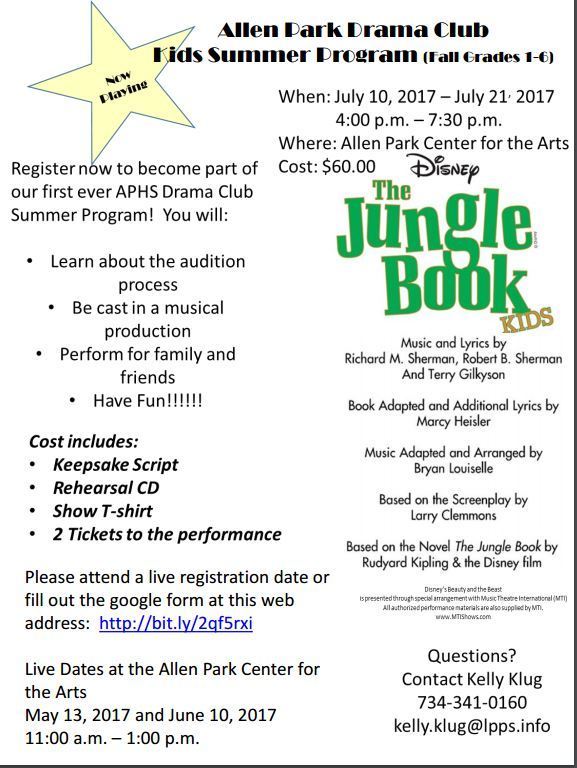

5 THINGS TEACHERS CAN DO NOW TO PREPARE FOR NEXT YEAR
When I first started teaching I never liked hearing that infamous nine word phrase that teachers all too often hear from jealous folks who are not in the profession.
#1 Plan and Prep for the First Few Weeks
#2 Try Something New
#3 Prepare Your Walls and Bulletin Boards
#4 Fine Tune Your Procedures and Routines
#5 Declutter Your Classroom
Click on the tabs at the top to explore the ideas I’ve shared for decluttering, organizing, decorating and managing your classroom.I’ve written a companion post to this one titled, 3 Boxes Teachers Should Pack Before Summer Vacation for the Upper Elementary Snapshots Collaborative Blog. My hope is that the combined tips shared will allow you to enjoy your vacation, recharge your teacher batteries, spend time with family and friends and then hit the ground running for the new year. Be sure to visit my there and read that post as well.
Building a Student Centered School
BIRMINGHAM COVINGTON: BUILDING A STUDENT-CENTERED SCHOOL
A group of middle school students in full beekeeping gear examines one of the hives their school keeps in the woods nearby. “Ooh, there’s honey!” says one excitedly. “I see nectar!” says another.
These eager fifth and sixth graders from Birmingham Covington, a public magnet school in suburban Michigan focused on science and technology, are empowered to become self-directed learners through hands-on experiences in and outside their classroom.
Birmingham Covington’s student-centered philosophy is embedded throughout the curriculum, from third- and fourth-grade classes focused on teaching individual resourcefulness to an almost wholly independent capstone class in seventh and eighth grade called Thinkering Studio. Teachers at the school often say they’re “teaching kids to teach themselves” and rarely answer questions directly; instead they ask students to consider other sources of information first. Even the classrooms, with their spacious communal tables and movable walls, emphasize fluid group and peer-to-peer dynamics over teacher-led instruction.
The 650-student school offers grades 3 through 8 only and pairs grades together, following research that shows that mixing age groups accelerates learning. For more than a decade, Birmingham Covington’s students have ranked at or above the 95th percentile in overall performance for all Michigan elementary and middle schools.
By relentlessly focusing the classwork on student interest and independence, the educators at Birmingham Covington hope to transform students into active learners who will be successful throughout their lifetimes.
“When you get kids collaborating together, they become more resourceful and they see themselves as experts,” said Mark Morawski, who’s been the principal since 2013. “All of a sudden you’ve opened the ceiling to what kids are able to do, and they surprise you sometimes.”
Solving Real-World Problems: The Bee Project
In the class, which combines inquiry-based science and English language arts (ELA), students build their research, literacy, and collaboration skills through small group projects aimed at effecting lasting change around real-world problems. Working on a range of activities—from building a website to managing a real beehive—students become more active and engaged learners, teachers say.
“Science literacy is teaching our kids to be curious about the world around them, with the problems they identify,” said ELA teacher Pauline Roberts, who co-teaches the class. “Even as students, they are learning how to become effective agents of change. It’s bigger than the science content—it’s about helping to develop the citizens that we hope our children become.”
Teaching Resourcefulness
Throughout Birmingham Covington, both coursework and instruction push students to learn lifelong skills like independence and resourcefulness, which teachers encourage early on in the primary grades.
Third- and fourth-grade teacher Jessie Heckman says she empowers her students to become more resourceful by solving common problems with the support of their classmates. Instead of raising their hands when they have a question or encounter a hurdle, for example, Heckman’s students clip clothespins to their computers and fellow students circulate around to troubleshoot—a system she calls the help desk.
“Kids need to learn teamwork-based skills because every other class in any other subject that they have—third through eighth grade—requires them to work in different sized groups accomplishing different tasks,” Heckman explains.
Modeling Collaboration: Teacher Labs
The school’s voluntary Teacher Labs—facilitated by an instructional coach and organized around a clear, written protocol—enable teachers to reflect on their craft with support from their peers. Through the labs, small groups of teachers observe each other’s classes and then offer constructive feedback around a stated objective.
“We’re really asking teachers to step outside of their comfort zones,” said Roberts, who serves as the lead facilitator in the labs. “We are creatures who live behind closed doors. To experience being in someone else’s classroom is really powerful.”
Increasing Independence for Older Learners
As they near the end of their time at the school, Birmingham Covington seventh- and eighth-grade students are accustomed to self-reliance and problem-solving. They put these skills to use in Thinkering Studio, an elective class where they design their own independent learning projects, and Engage, a class focused on design thinking—a system of solving problems that follows the steps of inquiry, ideation, prototyping, and testing.
In Engage, teachers Roy McCloud and Mathew Brown guide students to work on various self-directed, team-oriented projects like designing a new sport for third graders or building a roller coaster. Their support and feedback direct students toward the right resources while encouraging them to dig deeper: Did students ask the right questions? Did they get the right information? Did they go to other groups for feedback?
In these culminating classes, as in the curriculum more generally, teachers act as guides rather than instructors, directing students toward helpful resources but ultimately insisting they solve their own problems.
_________
This innovative, student-centered approach to learning—the bedrock of the school’s vision—takes the long view, helping students develop skills and interests they can continue to draw on after they leave the school. The school believes that this model better prepares students for real-world challenges, since modern workplaces are increasingly collaborative and involve complex, interdisciplinary problem solving.
“The ultimate questions we’re going to be asked by future employers is ‘Can this person work well in a team? Does this person have the ability to problem solve and critically think?’” said Morawski. “Because our students are more resourceful, they have more intrinsic motivation in the learning process and ultimately, are learning to be learners.”


